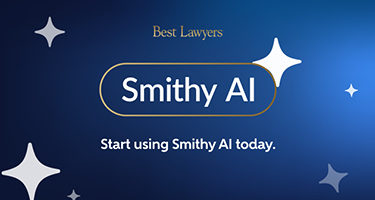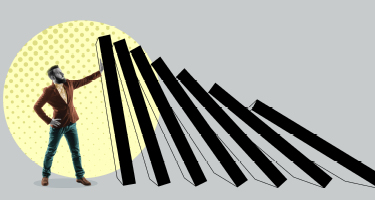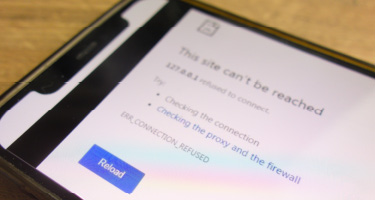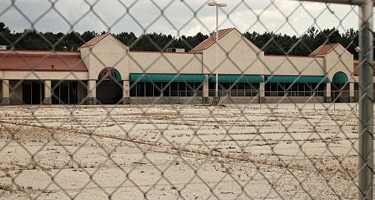The court has denied summary judgment, and now the defendant is facing trial and a looming jury instruction on punitive damages. As defense counsel, you recognize that a punitive damages instruction impacts the defense. How so, exactly? Here’s what to keep in mind.
The punitive damages defense begins at the pretrial stage. Aside from motion practice seeking judgment on a punitive damages claim, a related question, depending on the jurisdiction, is whether the defense ought to seek bifurcation of the liability and punitive damages phases of the trial. The key to the answer turns on whether the defendant can elicit new evidence in the punitive damages phase. For example, perhaps remedial measures or policy changes were implemented after the fact that cannot be admitted in the liability phase.
In the absence of different evidence, what’s the underlying message in the punitive damages phase other than “the defendant still doesn’t get it”? With an all-in-one approach to a trial, a jury that might otherwise be inclined to award punitive damages could be satisfied with an award of compensatory damages (and the defendant’s assurance of accountability), thereby avoiding a post-trial award of attorneys’ fees.
Even before that, the defendant should factor in the likelihood of a punitive damages instruction—and its effect on trial strategy—in the settlement calculus. Counsel should likewise be mindful of the punitive damages claim in witness interviews and discovery. A plaintiff may make important concessions in a deposition that can be used in motion practice and at trial, such as acknowledging that the defendant did not intend to cause harm through its actions. Specific evidentiary issues should be raised prior to trial in motions in limine, which can go a long way toward defining the rules of engagement at trial.
Lay the groundwork for trial. Whenever possible, draft jury questionnaires and voir dire questions tailored to the specific case issues. This will help you gauge potential jurors’ impressions about punitive damages. Jury instructions and written juror questions (interrogatories) should advocate within the law and evidence, articulating the heightened standard for awarding punitive damages based on aggravated or egregious misconduct.
The facts matter. Every lawyer (and client) is an advocate, but it’s the unvarnished facts, viewed through the jury’s eyes, that matter at trial. The reality is that by the time of the punitive damages instruction, the court will twice have passed (under Rules 56 and 50) on the defendant’s party line. The evidence and arguments—going to both liability and punitive damages—must be tested in mock presentations, the nature of which can vary depending on the case (the amount of money at stake, for example). Whatever the process, it’s critical to gain an independent perspective of the evidence outside the legal defense bubble.
The defendant must show up. A cardinal rule for defending a punitive damages claim is to be there in person. The jury needs to see that the defendant takes the matter seriously. A meaningful corporate representative must attend and participate in the trial; defendant’s witnesses must testify to the extent possible; and the defense must provide a credible explanation if a particularly important witness does not testify.
Develop a narrative. Defense counsel must build a comprehensive narrative that goes to the foundational concepts of punitive damages—namely punishment for past misconduct and deterrence of future misconduct. It’s one thing to stubbornly argue that the defendant didn’t do anything wrong, but a looming punitive damages instruction requires the defendant to step out from behind the burden of proof and elicit evidence affirmatively demonstrating that he or she does indeed “get it.”
Whatever the process, it’s critical to gain an independent perspective of the evidence outside the legal defense bubble."
The narrative should be supported by objective documentary evidence. This could include evidence of a peculiar misunderstanding or an explanation of why the same scenario is unlikely to arise again. The defense should elicit evidence of the policies and procedures in place to safeguard against the occurrence or prevent a future occurrence. The defense should marshal whatever facts and evidence exist of the defendant’s good faith and fair dealing, or that refute any indication of malicious conduct.
Assess the approach at trial. If the defendant is facing a punitive damages instruction, the defense narrative begins to unfold during voir dire and the opening statement. During the trial, what message will you send the jury, and how will jurors perceive the defendant? Will the defense try to characterize the plaintiff as opportunistic or a liar, and what’s the risk if the jury doesn’t agree? Consider actively challenging defense witnesses to explain and back up their testimony to build credibility by anticipating the jury’s questions. Throughout, make use of technology. Jurors expect it, and it’s necessary to hold their attention.
At closing, you’ll urge the jury to reach a verdict in favor of the defense, but has your client authorized you to give jurors an alternative to anchor the position? The jury will not view a reasonable alternative, properly couched in a closing argument, as a concession of liability or a sign of weakness. An alternative damages amount steals the plaintiff’s thunder in terms of imploring the jury to “send a message.” Assure jurors in concrete terms of the accountability conveyed by a modest or even nominal award.
Do not overreach. Newton’s Third Law of Motion teaches that every action produces an equal and opposite reaction. This also applies when attempting to defend the indefensible. If the defendant’s conduct is indefensible (and the case cannot be settled), counsel and witnesses must adjust their approach to defend where the real exposure lies.
Move for judgment. At the close of the plaintiff’s case, the defendant should move for judgment as a matter of law under Rule 50(a). The argument should be sketched out before trial based on the anticipated evidence. Remember that the court might defer even the most meritorious motion for judgment pending the jury’s verdict and post-trial motions. The motion for judgment may be critical to preserve certain post-trial motions.
Stipulate to facts. Offer to stipulate to facts that are unhelpful to the defense, which the court will read to the jury in lieu of testimony. One area for stipulation is the defendant’s financial metrics. A stipulation not only shortens the proceeding; it may be preferable to live testimony that might well captivate the jury.
Object and preserve. Before the trial begins, prepare to lodge appropriate objections, including to the jury instructions. The balancing act—objecting to evidence versus appearing obstreperous—depends on a case-specific mixture of the judge, the pretrial rulings and the potential harm or prejudice arising from the evidence in question.
Watch and adjust. Although it may be off-putting for trial counsel to stare intently at the jurors, there may be others assisting with the trial (co-counsel, electronic technician, consultant) who can unobtrusively focus on the jury’s reactions. Trial counsel should receive real-time feedback on them and adjust the presentation accordingly.
A looming punitive damages instruction raises the stakes at trial. As such, defense of the punitive damages claim must always be an integral part of the defendant’s case.
David D. Yeagley is a partner at Ulmer & Berne. David is a trial and appellate lawyer whose practice focuses on class action and complex litigation. David’s practice encompasses the defense of consumer protection and deceptive practices litigation, warranty and false advertising litigation, insurance policy litigation, TCPA class actions, real estate and construction litigation, director, officer and shareholder rights litigation including D&O and derivative claims, credit card litigation, food advertising and marketing litigation, automobile franchise litigation, investment fraud and securities litigation, business contracts litigation, defective products and Magnuson-Moss Warranty Act litigation, and environmental and toxic tort litigation. David is skilled in the development of comprehensive class action defense strategies, including jurisdictional issues and the use of early motion practice based on principles under Article III standing, Rule 12(b) and Rule 23. David also has extensive experience regarding arbitration proceedings and the enforcement of arbitration clauses in consumer and business contracts. He has achieved the highest rating, AV Preeminent®, from Martindale-Hubbell®.
Facing a punitive damages claim? Connect with experienced trial lawyers through the Best Lawyers Find a Lawyer tool to get guidance on navigating defense strategies.
































